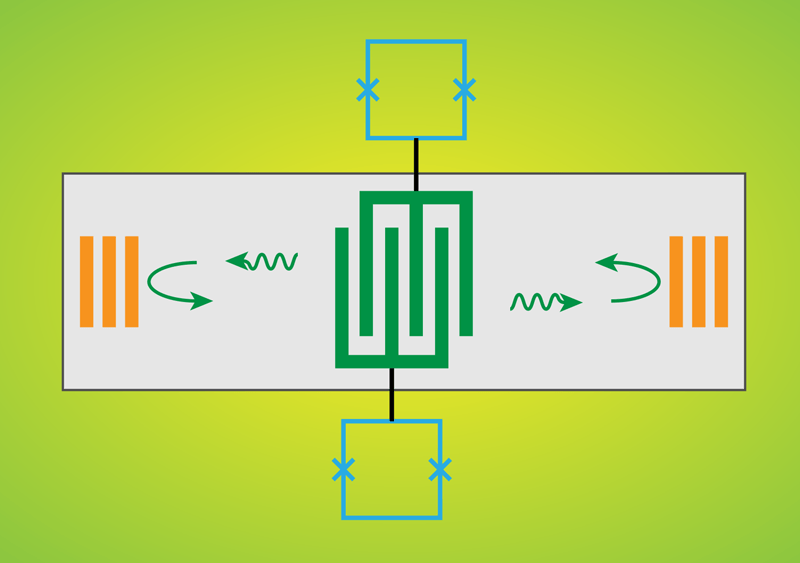
Few quantum effects are as mind-tripping as the quantum eraser, in which quantum signatures can appear or disappear depending on the future actions of an experimenter. Previous quantum eraser experiments have used photons, but a research team has now demonstrated the same bewildering phenomenon with phonons, the quantum particles of vibration and sound.
The ability to perform this magic trick with phonons suggests that the particles might serve as useful intermediaries in the transport of quantum information over long distances.
The quantum eraser was first proposed nearly 40 years ago. and the first experimental realization of the quantum eraser used photons in an optical interferometer, but any quantum object should work.
The team generates single phonons that travel on the surface of a long and narrow slab (or channel) of piezoelectric material connected to two superconducting qubits. Electronic signals from the qubits are converted into phonons in the channel through a tiny comb-shaped device at the channel’s center. The phonons reflect off “acoustic mirrors” at the two ends of the channel and then return to the device, where they reconvert back to electronic signals. The researchers demonstrated that phonons could transfer quantum information between the two qubits.
The eraser highlights the potential of phonons as quantum information carriers. Photons are the commonly used carriers, but they are difficult to couple to qubits. (Physics Aps)
This research is published in Physical Review X.
